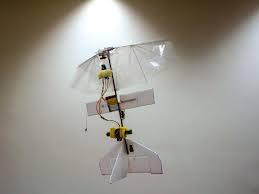‘The impact that data has on the digital city and the choices we have in order to develop the digital city for the greater good ( Ferguson, J 2016)
It is this exploration of the collective input we have in the future of our cities that became a prominent area of interest for me during this module. From the areas that were explored, what seemed apparent (and a surprise to me), was the role that nature had to play within this, the lovely utopian ideal of bringing together nature and technology to construct our cities of the future.
In particular 3D printing demonstrated this strong connection of utilising data within the context of the development of our digital cities. During one class the concept of the ‘breathing house’ was created, a perfect example of 3D printing, sustainability, and smart technology working together. This discussion in the class came from other ideas that we had explored in blogs about 3D printing – the creation of structures from nature, using natural design constructs to implement new forms of housing. As Juliet wrote in her blog ‘it also enables the creation of shapes and structures that only exist in nature, leading to exciting projects such as the 3D house created by the architect Enrico Dini’ (Ferguson, J 2016)
The sense of us empowering ourselves through smart citizenship to create these future cities is vital, particularly as it means reconnecting with our cities again. Community initiatives such as ‘Citi-Sense’, where citizens are shaping their cities by the data they are collecting and collectively interpreting is an important start to this process. https://www.youtube.com/watch?v=cgDO3z9B3Kc
I went back to the first blog I wrote about the insect like drones flying silently around our cities, data imaging them. For me what was interesting was that this again demonstrated how we are developing and replicating nature in order to design the most effective drones for the future. This new dragonfly drone could be seen as a positive symbol of what is to come, an idea of us successfully bringing together nature and technology to create the digital cities of the future.
References
Lipson, H. & Kurman, M., 2013 Fabricated: the new world of 3D printing, Indianapolis: John Wiley: chapter 1, chapter 5, chapter 10 , chapter 14,
The Man Who Prints Houses. (2011). Directed by Jack Wake-Walker & Marc Webb. [Film Trailer]. Available at: https://vimeo.com/29984723 [accessed 8 May 2016].
Citi-Sense video available at; https://www.youtube.com/watch?v=cgDO3z9B3Kc
Mav Lab, Delft University of Technology 2015 http://mavlab.tudelft.nl/extremely-light-weight-autonomous-mavs/
Re-Work, The Connected Cities Event 2016 https://www.re-work.co/events/connected-city
Blogs
Goods On-Demand by Juliet Ferguson. Published May 2016
Future Homes From Ferns by Kate Mapes. Published May 2016
Our Data Driven Society by Juliet Ferguson. Published February 2016
Insect Drones by Kate Mapes. Published February 2016

















